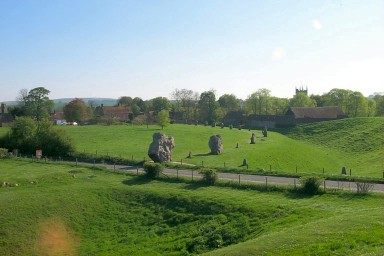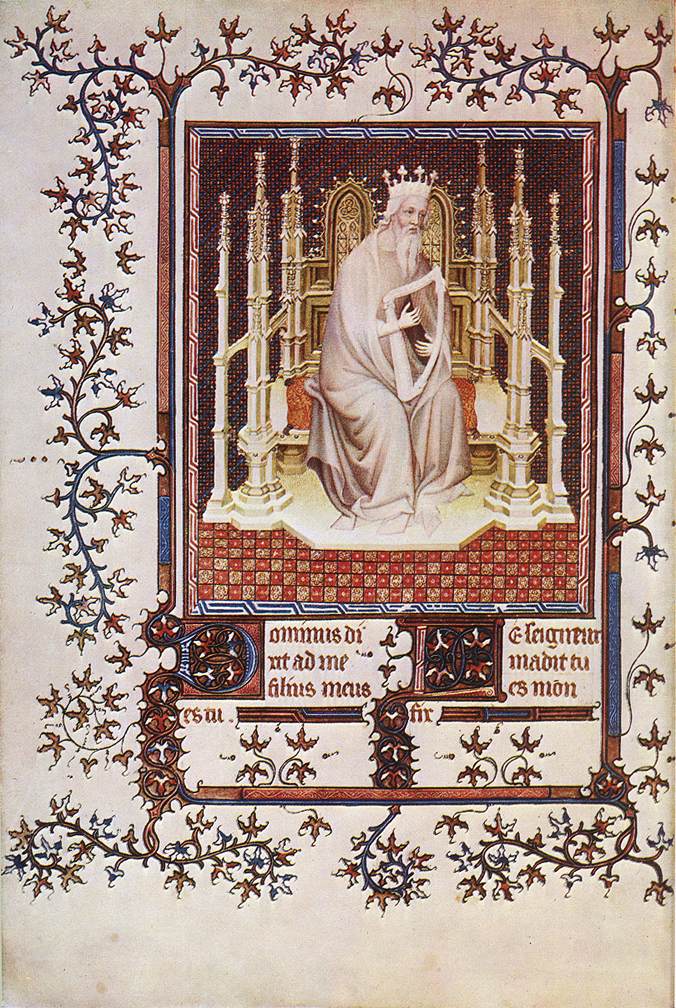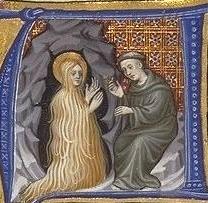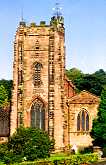|
For Good Things Below

|
| The End Of The Quest: Frank Dicksee (1853-1928) |
Sir Frank Dicksee's painting, seen to your left, is entitled, "The End of the
Quest", but for us, and hopefully you, this is just the beginning of our quest. On the right hand side there, we've grouped
together a sampling of some of the routes that we'll be taking. Some might note a familiarity with this page, this reason
being is a version of it first appeared on our Sam and leila website(it's still there), and upon taking another look
at it, found it to be the perfect introduction to what we are about here, or at least we hope it is. Roads, routes, journeys,
pilgrimages, those taken, those already underway, those about to be undertaken, and those in the stages of contemplation,
we're keeping all theae in mind as this website is constructed, and, again, we cannot over-emphasise that there is more than
one way to that point where The Sacred Presence, The Goddess, God, Allah, Jehovah, whatever name you choose to use, is in
the fore front of your thoughts. The Presence is always with us, no matter what we maybe about, at any point in time, The
Creation is all around us, stop and look once in awhile and marvel at the wonders, and think upon their creation, for surely
that way lies grace
Our way starts here; Shall We Begin?

|
| Avebury Stone Circle and in the background, St. James Church, Avebury Village, Wiltshire. UK |
Now Be Thankful
Dave Swarbrick/Richard Thompson
copyright Warlock Music
When the stone is grown too cold to kneel
In crystal waters
I'll be bound
Cold as stone weary to the sounds upon the wheel.
Now be thankful for good things below
Now be thankful to your
maker
For the rose, the red rose blooms for all to know.
When the fire is grown too fierce to breathe
In burning irons
I'll be bound
Fierce as fire weary to the sound upon the wheel.
Now be thankful for good things below
Now be thankful to your
maker
For the rose, the red rose blooms for all to know
(Many thanks to Swarb for confirming the lyrics)
![The Special Place [click for larger image]](sitebuildercontent/sitebuilderpictures/thespecialplace2.jpg)
|
| The Special Place.this picture, copyright © 2003/2004/2005/2006. Sam and leila. all rights reserved. |
![The Special Place II [click for larger image]](sitebuildercontent/sitebuilderpictures/thatspecialplace.jpg)
|
| The Special Place 2.this picture, copyright © 2003/2004/2005/2006 Sam and leila. all rights reserved |
The Bible Tells Us So-Or Does It?

|
| King David. before 1402, Illumination on parchment. Bibliothèque Nationale, Paris |
Archeologists, historians and others are debating whether people
and places in the Old Testament - King David, for instance, or Israel it'self - actually existed. As Michael Posner reported,
in an article in The Globe and Mail, on Saturday September 26th, 2002, there's alot riding on it. Did The Bible's King David
-- powerful Judean progenitor of the House of David, from whom Jesus and Queen Elizabeth II are said to descend -- actually
exist?That question, and its critical implications, is generating a nasty little contretemps in the academic world. But its
ripples are now extending into the disputatious waters of contemporary Middle Eastern politics. On one side stand the so-called
minimalists, a group of scholarly debunkers who contend that there is scarcely a shred of archeological evidence or contemporaneous
records to support the biblical claims -- and that the story of David is nothing more than good historical fiction. The leading
minimalist proponent, Dr. Philip R. Davies, a professor of religious studies at the University of Sheffield in England, says,
"The figure of King David is about as historical as King Arthur."In fact, David -- or the absence of David -- is only the
beginning. To hear it from the debunkers, few of whom are actually archeologists, there is no evidence to support Joshua's
trumpet-wielding conquest of Jericho or even Moses's fabled exodus from Egypt. On the other stand the maximalists, defenders
of entrenched Old Testament truth. According to them, David -- son of Jesse, slayer of the mighty Goliath, successor to King
Saul, soldier, statesman and musician -- ushered in a golden age, uniting the divided house of Israel (the 10 northern tribes
and two in the south) and extending his realm from the Red Sea to the Euphrates.The middle ground is occupied by the aptly
named centrists, who insist that the mere absence of hard archeological proof does not necessarily invalidate the Bible's
veracity: Moses, David, Solomon et al surely existed, but whoever wrote the Bible has exaggerated their achievements for religious
or dogmatic purposes.The core of the problem, of course, is that archeology is as much an art as a science, with a good deal
of conclusive weight attached to methodologies and dating protocols that are anything but bulletproof. Or, as Herschel Shanks,
respected editor of the popular Bibical Archeological Review and two other journals puts it, "There's nothing certain about
archeology. If you want certainty, go into mathematics."The various sides are sharpening their lances for the forthcoming
Bible and Archeology Fest, to be held in Toronto, Nov. 22-24, and featuring scholars from the Sorbonne, Cornell, Hebrew University,
Berkeley and Notre Dame among others. But meanwhile, the debate over ancient events and personalities has acquired a new relevance.
Why? Because if there were no exodus from Egypt, no conquest of Canaan by Joshua, no shepherd-boy-turned-king who united the
often-quarrelsome tribes of Israel into a united monarchy -- if all of this were just a durable bestseller on the fiction
list -- then the foundation of modern Israel's claim to its status as the Holy Land would be under threat. In effect, Dr.
Shanks says, a small but vocal group of scholars -- comprising mostly academics in Denmark and England, along with one lone
Israeli (Tel Aviv University's Israel Finkelstein) -- is attempting to discredit the Bible by using a few, much-disputed archeological
findings to challenge the time line of the Old Testament. For example, the Bible maintains that David's son and successor,
Solomon, built a grand fortress at Megiddo (about 32 kilometres south of modern-day Haifa) in the 10th century BC. Dr. Finkelstein
and other archeologists have recently argued that city gates and other ruins found at the site actually date to the ninth
century. Those dates, he has written, "better fit the direct archeological evidence, and liberate our chronological structure
from too heavy a dependence on an uncritical reading of the biblical text."But Dr. Shanks, who was in Toronto recently to
prepare for the November conference, says the minimalists have minimal credibility. "Usually, they say, 'Where's the evidence
for David or the Exodus?' Well, for that matter where's the evidence for Jesus? We don't have a plaque that says 'Jesus lived
here.' " It's a specious claim, he says, "because, really, what kind of evidence would constitute incontrovertible truth?"
More important, "the minimalists have had some bad luck lately," he says. In 1993, a fragment of a monument found at Tel Dan,
site of the ancient Israelite city, mentions David and the House of David in Aramaic. Dating to about 100 years after David's
death, its discovery marked the first time his name had been found outside the Bible, and it was apparently inscribed by an
enemy of his descendants. To blunt the implications of the find, miminalists initially argued that it was a forgery. Then,
when its authenticity was proved, they suggested that the Hebrew letters on the shard signifying David's name had other possible
interpretations -- the House of Uncle, perhaps, or the House of the Beloved. But that quibble also failed to find any backers,
Dr. Shanks says. A Moabite stone found two years earlier contained another reference to the House of David. "Now, how big
was David's kingdom, how glorious? This we can argue about," Dr. Shanks says. "There are legitimate problems." But did David
exist? Very likely. He acknowledges, however, that the scholarly debate has become tinged with more than a hint of present-day
politics. "They're writing books with titles like The Invention of Ancient Israel: The Silencing of Palestinian
History [by William Whitelam]"-- not very subtle attempts to subvert the historical premise of the modern Jewish state.
"I think it's important to unmask [these people]," the doyen of American archeologists, the University of Arizona's William
Dever, has said. "They are not biblical scholars. They are certainly not archeologists. They are social engineers manipulating
the biblical text for their own goals." As early as 13 centuries before the birth of Jesus, and 200 years before the birth
of David, according to a stele now parked in the Cairo Museum, pharaoah Menapteh boasts of his armies' conquest of Israel.
"Israel is laid waste . . . his seed is no more," the inscription reads. "This is very inconvenient stuff for minimalists,"
Dr. Shanks says, "because there's no other way to read it. This is a clear reference to ancient Israel."The contemporary resonance
of this dispute became glaringly apparent during the Camp David peace talks of 2000, when Palestine Liberation Organization
leader Yasser Arafat repeatedly asserted that there never had been a Jewish presence on the Temple Mount, site of Solomon's
First Temple and Herod's magnificent Second Temple. Israeli negotiators were stunned. The problem now, Dr. Shanks says, is
that Israel ceded control of the Temple Mount to the Waqf, an Islamic religious authority, in 1967. "It does seem they're
attempting to Muslimize the site, and eliminate any reference to its Judaic past."

1853-1928
|
 |
|

|
| St Chad's, Lichfield, UK |
Routes and Discussions
and it is too.
multi-faith as well.
todays fight for tomorrows freedom
extremely informative
with an extensive listing of
churches, Christian organisations
and resources, the very heart
of
this website
supporting Economic Justice Campaigns
around the world
daily prayer and prayer resources
exploring Anglican worship
steps of faith
Whether you are looking for
scientific support for your faith
or answers to questions
about God and science.
In expression of our
Christian foundation
and vision the mission of
St Martin's College is..
journeys of faith
Manitoba and
Northwestern Ontario
Conference
fighting poverty through fair trade
|
 |
 |
 |
|
|
 |
 |
 |
|
|
|

